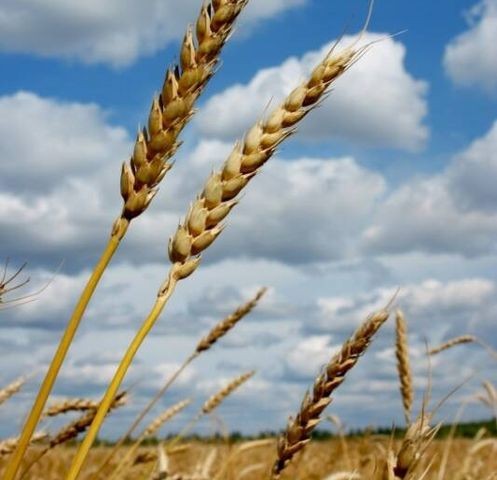BISHKEK (TCA) — A new book by the Food and Agriculture Organization of the United Nations (FAO) calls for a transition across Central Asia to conservation agriculture, a key recommendation of the Organization’s “Save and Grow” model of sustainable crop production. It suggests that governments learn from the example of Kazakhstan, where conservation agriculture practices – zero-tillage, retention of crop residues and crop rotations – have helped wheat farmers achieve high yields even during severe droughts, the FAO Regional Office for Europe and Central Asia said.
The book, Save and Grow in practice: rice, maize, wheat warns that many cereal production systems in the region are unsustainable, owing to land degradation, soil salinization and diminishing returns to high-input Green Revolution varieties and input packages.
As Central Asia’s population grows, from 68 million today to 90 million by 2050, its food security will be further threatened by climate change, which will push wheat production into less favoured areas. Rising wheat prices will affect most severely low-income populations: per capita wheat consumption in Central Asia is a high 160 kg a year and national poverty rates range as high as 40 percent.
One of the book’s co-authors, Graeme Thomas, found that the adoption of conservation agriculture, especially zero-tillage, has helped wheat farmers in northern Kazakhstan restore and sustain production after decades of massive soil erosion.
“Around 2 million hectares of farm land in Kazakhstan are now under full conservation agriculture,” Thomas said. “Adoption has been driven by necessity. While the country’s northern steppe has vast land resources for wheat production, the crop relies entirely on precipitation, and therefore is very vulnerable to loss of soil moisture.”
By minimizing or eliminating tillage and protecting the soil with crop residues, Conservation Agriculture reduces erosion, increases levels of soil organic carbon and improves the soil’s capacity to store nutrients and moisture. Despite a major drought in 2012, some zero-till farmers in Kazakhstan’s Kostanay province achieved yields of 2 tonnes per hectare – almost double the national average of recent years.
Unploughed land not only produces wheat yields up to 25 percent higher than ploughed land: by not ploughing, farmers can cut labour costs by 40 percent and fuel costs by 70 percent. In fact, adoption of Conservation Agriculture in Kazakhstan was led by large farming enterprises, where managers were striving to increase production while reducing costs.
Combining zero-tillage with permanent soil cover also helps to suppress weeds. Without tillage, the natural store of weed seeds in the soil diminishes over time, and decomposing residues release humic acids, which block the seeds’ germination.
The Government of Kazakhstan actively promotes Conservation Agriculture. In 2011, it introduced subsidies for equipment such as seed drills that are three to four times higher than subsidies for conventional technologies. Government support has encouraged farmers to invest an estimated US$200 million to equip their farms with Conservation Agriculture machinery.
Conservation agriculture is considered highly suitable for all of Central Asia’s major cropping systems, from northern Kazakhstan’s wheat belt to the irrigated wheat, rice and cotton fields of Uzbekistan and Tajikistan.
By reducing erosion and building healthy soils, the new book asserts, it would help combat the desertification and land degradation that costs Central Asian countries an estimated $2.5 billion annually. By optimizing water-use efficiency, it could be particularly beneficial in irrigated areas. Salinization, caused mainly by over-use of water, affects more than 50 percent of irrigated land in Uzbekistan and Turkmenistan.
“In recent years, information on conservation agriculture has reached farmers across the region and some conservation agriculture practices are appearing in their fields,” Thomas said. “However, full conservation agriculture remains limited outside of northern Kazakhstan.”
Most Central Asian countries have no policies that promote conservation agriculture. Since farmers typically do not pay for irrigation water, they have little incentive to adopt water-saving practices. Some countries even have regulations that prevent farmers from leaving crop residues on the field. While seed drills have been tested successfully, few are commercially available.
FAO’s new book recommends that a transition to conservation agriculture in Central Asia start by increasing awareness of its benefits – among farmers, researchers, extensionists and policymakers. Governments can support the transition by encouraging local manufacture of conservation agriculture equipment – particularly seed drills that are adapted to specific soil and climate conditions.



